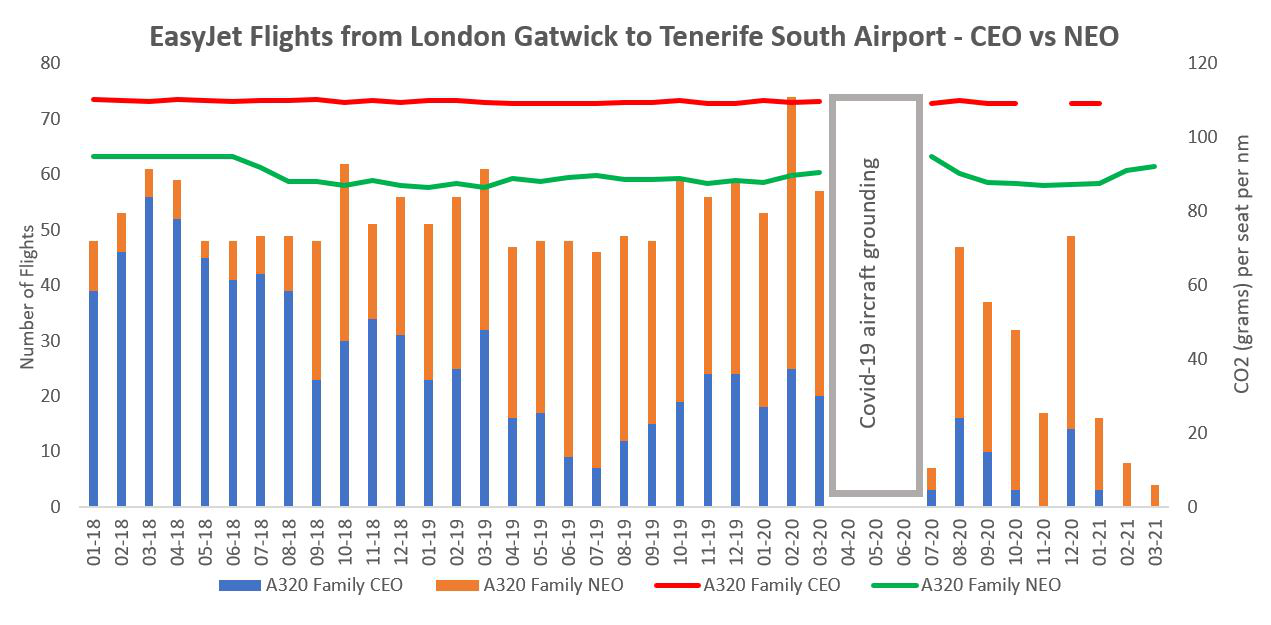17/06/2021
Using unique data from IBA's InsightIQ Carbon Emissions Calculator, we analysed EasyJet flights between London Gatwick Airport and Tenerife South Airport.
We can clearly identify a shift towards the more fuel-efficient Airbus A320 NEO since late 2018, replacing the A320 CEO. This indicates EasyJet's enthusiasm for reducing fuel efficiency and utilising newer aircraft on key bucket and spade routes.
Unsurprisingly, the total number of flights dropped significantly at the start of the pandemic, with no flights recorded between April to July 2020. Consequently, we can observe reduced carbon emissions in absolute terms in those months.

In addition to seating layouts, the technology of a particular generation of aircraft and engine have a significant effect on overall efficiency. This can be measured on a CO2 per seat mile basis. Using efficiency metrics from InsightIQ's Carbon Emissions Calculator, we can clearly compare the average CO2 per seat mile for the A320 CEO and NEO aircraft.
The A320 NEO family averaged 89.9 grams of Carbon per seat mile between March 2018 and March 2021, compared to 109.7g per seat mile from the A320 CEO in the same period. This represents an 18% reduction in overall emissions.
InsightIQ's Carbon Emissions Calculator (CEC) is the only finance-focused carbon modelling tool currently available; it's leading the way. The CEC benefits from IBA's proprietary fuel-burn data which, integrated with InsightIQ's Flights and Fleets module, can illustrate carbon emissions by any combination of: aircraft MSN, time period, airline, lessor, aircraft model, OEM, country, airport and route pair.
If you have any questions or would like to chat with one of our team about our services, please contact Tim Boon, Senior Aviation Analyst.

IBA's InsightIQ analysis platform flexibly illustrates multiple asset, fleet and market positions, actual and potential, to inform client choices and identify acquisition opportunities. Immediate access to crucial aircraft, engine, lease rate and fleet data eases appreciation of historic and future aircraft concentrations and operator profiles.